Mention the name “John Moses Browning” to knowledgeable American gun owners and their usual reaction is profound respect and great appreciation. This is for good reason: though he died almost 90 years ago, John Browning either created or influenced the design of many of the most iconic pistols, lever-action rifles, semi-automatic shotguns, and machine guns in use today. The guns most often associated with John M. Browning are . . .
the famed Winchester lever-action guns that “won the west,” the ubiquitous Colt 1911 automatic pistol, and U.S. military machine guns such as the celebrated .50 caliber M2 “Ma Deuce,” the .30 caliber M1919 medium machine gun, and the .30 caliber M1918 BAR automatic rifle.
Indeed, with regard to the latter machine guns, every American owes Mr. Browning a huge debt of gratitude, since it was Browning’s firearms designs that helped carry the American military to victory in two World Wars and Korea. So great are his contributions to the security of this nation, that John Moses Browning undoubtedly deserves his own Mt. Rushmore or at least a memorial in Washington, DC.
Despite his considerable fame and recognition, there is another facet of Browning’s life that is less well known to American gun owners, yet critically important. That story involves Mr. Browning’s intricate and prolific relationship with an upstart Belgian arms factory now known as Fabrique Nationale Herstal (a.k.a. “FN Herstal” or simply “FN”).
The partnership between Mr. Browning and FN began in 1897 and has continued long past Browning’s death in 1926 to today. This partnership has had profound impacts for both FN and Mr. Browning, influencing firearms history for years to come. For its part, FN would make John Browning’s gun designs come to life on both American shores and abroad. Conversely, those same designs secured FN’s future as a manufacturer and positioned the company as a major player in the military small arms market, ensuring immortality for Mr. Browning’s vision.
It is not understating matters to say that together, FN and John Browning shaped the course of development of modern small arms in ways that are still being manifested in today’s gun designs.
The Browning/FN story begins in 1886 in the blue-collar industrial town of Herstal, Belgium, a suburb of Liege. Located in the Meuse Valley, the Liege region had long been one of the world’s premier arms making centers. The region was rich in coal, iron, and water, all essential to the manufacture of small arms. The political and economic climate of the time ensured the arms industry enjoyed an unprecedented period of economic prosperity. As foreign nations began to ramp up their orders, they began demanding shorter and shorter delivery terms.
To remain competitive against German factories like the Loewe group and the Mauser and the Steyr Waffenwerke, several firms in the region set up a joint association called Les Fabricants d’Armes Reunis. This organization was to pave the way for the creation of Fabrique Nationale d’Armes de Guerre.
In 1887, the Belgian government decided it would replace 150,000 of its military regulation rifles and decided not to buy them abroad. This piqued the interest of Les Fabricants d’Armes Reunis and they began exploring how to set up an arms factory large enough to meet this production requirement. This would require tremendous resources. So they set out to lobby their three competitors to see if they would be willing to join forces.
They did, and after much negotiation, 12 firms – including those that were part of Les Fabricants d’Armes Reunis – banded together to form Fabrique Nationale D’Armes de Guerre (“National Factory for Arms of War”). Freshly infused with capital, FN built their state-of-the-art production facility in Herstal and inked the deal with the Belgian government to produce 150,000 Mauser rifles for 79 francs per gun.
FN cranked out that initial order of Mauser rifles in a mere five years. Other orders from foreign governments and for ammunition followed. FN’s success did not thrill the Waffenfabrik Mauser, who in 1894, sued FN over patent infringement of its Spanish Mauser model. After protracted litigation, FN lost and forfeited the patent. As a result, several directors resigned and Ludwig Loewe and Co. became the majority shareholder of FN.
Thus began a new era of German control in FN history, which was technologically and financially beneficial to a degree. Unfortunately, Loewe also redirected military small contracts away from Liege to its German factories in Berlin and Oberndorf, as well as to Steyr. These restrictions forced FN to seek ways to keep its Liege factory alive. Soon, they were building other products such as automobiles, motorcycles, bicycles and sporting arms.
The first product the Liege factory considered was the bicycle and in May 1898, the company invented and began production of the “FN chainless.” As part of that diversification effort, FN sent an American-born employee named Hart O. Berg to the United States to learn about innovations made in the manufacturing of bicycles. Berg was a native of Hartford, Connecticut, which coincidentally was the home of the Colt factory.
Whether by happenstance or by design, Berg met John M. Browning in Hartford, who was in town making one of his regular visits to Colt. Berg wasted no time in explaining to Browning that FN had a huge underutilized state-of-the-art factory along with an employee base of highly skilled gunsmiths and artisans. He further explained that two things that FN lacked were an in-house marquis designer (hint-hint) and some blueprints for the next generation of firearms.
As it turned out, John Browning’s situation was complimentary to FN’s plight. Browning was a prolific gun designer with a myriad of patents and an endless stream of ideas. But Browning did not have a modern factory staffed with machinists and gunsmiths capable of making his visions into reality. Certainly, he could – and did – sell his designs to Winchester and Colt, among others, but there was never that perfect seamless inventor-manufacturer partnership he had always sought.
One primary problem: the American firms would buy Browning’s patents in large part to keep other firms from getting them. To compound matters, Winchester and Colt had worked out a deal not to step on each other’s turf: Winchester would make rifles and Colt would focus on pistols. As a result, Browning needed a factory to build his semi-automatic pistol designs: although Colt had bought rights for U.S. production to some of Browning’s previous pistol designs on a royalty basis, Colt had opted to not put them into production.
With the potential for a match seemingly made in heaven, Messrs. Browning and Berg struck up a friendship. As Browning would later recount, his first thought was, “Think of it – a new gun factory with nothing to make!” He told his brother Matthew, “I’ll give them something that will set their wheels in motion.” Indeed, Berg returned to Belgium in June of 1897 with a prototype of a small .32 ACP (7.65x17mm) caliber automatic pistol (the future FN Browning Model 1899).
FN tested the prototype, and was pleasantly surprised to find the little pistol could fire 500 rounds without a single malfunction. This feat was unprecedented for that time. FN was quick to spot a good thing, and immediately signed a production contract on July 17, 1897.
The Model 1899, known as the “Pistolete Browning,” would be the first handgun ever produced by FN. The firm was so anxious to get the rights to the pistol that it even agreed to pay Browning a royalty of two Francs per gun on top of the initial payment of 2,000 dollars. This royalty represented 7% of the retail price of the pistol, which was 30 Francs. Browning had never before received royalties from Winchester or Colt, and therefore, this new arrangement with FN met with Browning’s enthusiastic approval.
The diminutive Model 1899 and its upgraded version, the Model 1900, would make John Browning a very wealthy man. Indeed, FN sold the Browning 1900 like proverbial hotcakes (or Belgian waffles?), and “Browning” became a household name in Europe. Total production numbers for the Model 1899 was around 10,900, while FN produced 724,550 units of the Model 1900. For their part, the citizens of Herstal viewed Monsieur Browning as a kind of savior, because the factory making his pistol brought their city some measure of prosperity, and a newfound sense of hope.
FN had not yet earned first position in Mr. Browning’s rolodex. That would change in 1902, however. Three years prior, in March of 1899, Browning had finally worked out the bugs of one his most challenging designs: the “Auto-5” shotgun. At the time, Winchester was John Browning’s preferred factory for long guns. So when it came time to sell his design for the Auto-5, Browning gave Winchester first dibs.
John Browning was largely responsible for Winchester having a near-monopoly on the sporting rifle market in the United States, so one might assume that Winchester President Thomas G. Bennett would have treated Browning like the star he was. But Bennett was too proud for that. He resented that he had to pay Browning the equivalent of hush money for his patents, even though Winchester had no intention of producing many of those designs. So Bennett sat on the new shotgun design for three years.
By January of 1902, John Browning had had enough of that nonsense. Browning showed up at New Haven intent on telling Bennett to either purchase the Auto-5 design or release it to be sold to another gunmaker.
The meeting between John Browning and T.G. Bennett lasted about five tense minutes. Needless to say, both men were in a tough spot. The Auto-5 shotgun, innovative as it was, was unproven, and it was unclear how the public would receive it. Furthermore, even if it was a success, it would cut into the sales of the Winchester Model 1897. Finally, Winchester never paid royalties to anybody, and to break that tradition would set bad precedent. Bennett thought he had to draw a line in the sand on royalties.
Big mistake. Browning grabbed his prototypes and hit the road, never to return to New Haven.
John Browning’s next stop was Ilion, New York. On January 8, 1902, John called Remington’s president Marcellus Hartley. Hartley agreed to see him later that afternoon. Unfortunately, Mr. Hartley died of a heart attack minutes before their meeting. The matter had been decided: FN would get the next crack at producing the Auto-5 shotgun.
Mr. Browning showed up in Herstal unannounced. It was a cold, rainy February day, and Browning hoped that the weather was not a harbinger of the days ahead. Fortunately, his concerns proved unfounded. The FN executives welcomed Mr. Browning with open arms. After all, John Browning was largely responsible for the factory’s production lines being prosperous. In fact, Mr. Browning was completely unaware the degree to which his little .32 ACP pistol, the Model 1899, had transformed FN’s fortunes.
Having excellent engineering backgrounds, FN executives immediately saw the genius in the Auto-5’s design that Winchester had apparently missed. Within a month, John Browning had a royalty contract, and FN owned the worldwide manufacturing and distribution rights to the Auto-5. FN also had their first customer for the Auto-5: John Browning ordered 10,000 Auto-5 shotguns for the American market, and even left a deposit for their manufacture.
John Browning spent three months in Herstal during that spring of 1902 supervising the initial pilot production of Auto-5 guns. He immersed himself in the culture and language of the Belgian people; by the time he left Herstal, he knew the French names for all of the shotgun and pistol parts. He became well-known and well-loved in Herstal. His quiet, unassuming nature could be mistaken for shyness, but his ability to connect with people was uncanny. As was his respect for the workers and artisans at the factory. A combination of translators and pantomime made up for the language barrier, and John was able to effectively convey the Browning ethos to the FN gunsmiths.
In both the factory and the community, he was soon known as “Le Maître,” French for “The Master.” To this day, in much of the Francophone world the term “Browning” is synonymous with “pistol,” like “Xerox” is here synonymous with “photocopy”.
So great was FN’s admiration for John Moses Browning, that in 1904, it released a portion of its worldwide exclusive rights to the Auto-5 shotgun. Freed from his contract restriction, Browning sold the U.S. manufacturing and distribution rights to Remington, which began production of the Model 11 in 1905. The Model 11, a slightly modified version of the Auto-5, would become a major seller for Big Green, with roughly 840,000 united sold, including a military contract during WWII.
For FN, the loss of the U.S. market for the Auto-5 was far eclipsed by their genuine desire to please Mr. Browning. The Belgians’ loyalty would be rewarded in 1907, when Browning granted FN the exclusive right to use his name as a trademark. The practical effect of this contract was far-reaching: no other company would be allowed to associate their guns with the famed Browning name. Moreover, Browning continued to furnish FN some of the most successful and iconic small arms designs the world has ever seen, including:
- FN Browning Model 1903 Military Semi Auto, 9mm Browning Long (9 x 20mm)
- FN Browning Model 1905/06 Vest Pocket (.25 ACP)
- FN Browning Model 1910/1922 (.32 ACP, .380 ACP)
- FN Grand Browning (same as Colt Model 1911, .45 ACP)
- FN Browning B25 Superposed Over/Under Shotgun
- 2 prototype 9mms which would become the M1935 Browning Hi-Power
- Browning SA-22, 22LR autoloading takedown rifle.
Each of these models would be produced in large numbers, which some exceeding the one million mark. In fact, the first of John Browning’s pistols to reach sales of one million was the diminutive “Vest Pocket” .25 ACP, model, the Model 1905/06, which reached this key remarkable milestone after only seven years in production.
Other less successful models included the following:
- Browning Trombone .22LR rifle
- FN Model 1900 .35 caliber rifle (same as Remington Model 8)
Even so, commercial failures were few and far between. In fact, FN firearms quickly became recognized the world over for their innovativeness, reliability, and craftsmanship.
World War I, however, created a new set of challenges and setbacks for FN. A Serbian nationalist named Gavrilo Princip started the events that led to the war when he murdered Austro-Hungarian Archduke Franz Ferdinand. (Ironically, the assassin used a 1913 production FN 1910 pistol chambered in .380 Auto.). Germany soon invaded Belgium; the FN factory was occupied by the Bosch and taken out of production for four years.
John M. Browning, on the other hand, would enter into a renaissance period back in the United States during the war years: he would devote virtually all of his free time to the patriotic duty of designing weapons of war. His iconic designs would be used to great effect by U.S. troops for generations to come: the M2 .50 caliber “Ma Deuce” heavy machine gun, the M1918 Browning Automatic Rifle (“BAR”), the M1919 medium machine gun, and a prototype 37mm anti-aircraft cannon. John M. Browning would be paid only a small fee for these designs, but he understood that his nation’s gratitude was payment enough.
After the Great War ended, Browning returned to his true passion: sporting arms. Browning would spend his remaining years designing the iconic B25 Superposed over-under shotgun, the Colt Woodsman .22LR pistol, the .22 trombone rifle, and a pair of 9mm prototype pistols which would become the FN Browning Hi Power. All told, Browning made 61 trips to Herstal in the last 24 years of his life. Given the speed of trans-oceanic travel back in those days, these trips represented years of travel time.
Unfortunately, the last voyage proved to be a one-way trip. John Browning became ill while on the factory floor and later died of a heart attack while working at his desk in the FN Herstal factory on November 26, 1926. His son Val Browning was at his side. John had been complaining of chest pains for several hours and soon became light headed. Lying on a couch in Val Browning’s office, John said to Val: “Son, I wouldn’t be surprised if I am dying.” Minutes later, the old gunsmith passed away, and the world lost the greatest firearms designer it has ever seen.
Despite the immense sadness that overtook the community in Liege, FN would continue on. Indeed, John M. Browning had left FN in a good position to prosper in the years ahead. Perhaps even more importantly than the designs themselves, Mr. Browning’s expertise had helped inspire FN’s next generation of excellent engineers, including, most notably, a gentleman by the name of Dieudonné Joseph Saive (1889–1973).
Monsieur Saive would go on to become FN’s chief weapons designer (Chef de Service), and would produce the Model 1949 (aka FN-49 or SAFN) and the iconic Fusil Automatique Léger (“Light Automatic Rifle”) aka: the FN FAL. He would also perfect the Browning Hi Power and the “Baby Browning” .25 ACP.
As a company, FN would go on to become one of the largest manufacturers of small arms in the world, and would be one of the key firms to arm the free world in post-World War II years. FN would also buy out Browning USA in 1977, establish a U.S. manufacturing operation in Columbia, SC in 1981 (FN Manufacturing), acquire the license to produce Winchester brand firearms in 1991, and establish FNH USA in 1998.
Today, FN Herstal’s operations in the U.S. consist of Browning North America and FN America, the result of combining FN Manufacturing and FNH USA in 2014. In addition, FN America’s Columbia facility has produced firearms such as the M4 and M4A1 carbines, M16 A2, A3 and A4 rifles, M240 medium machine guns, M249 squad automatic weapons, MK 46 and MK48 light machine guns, MK 20 sniper support rifles, and the MK 19 grenade launchers.
John Moses Browning may be gone, but the legacy of his designs lives on.









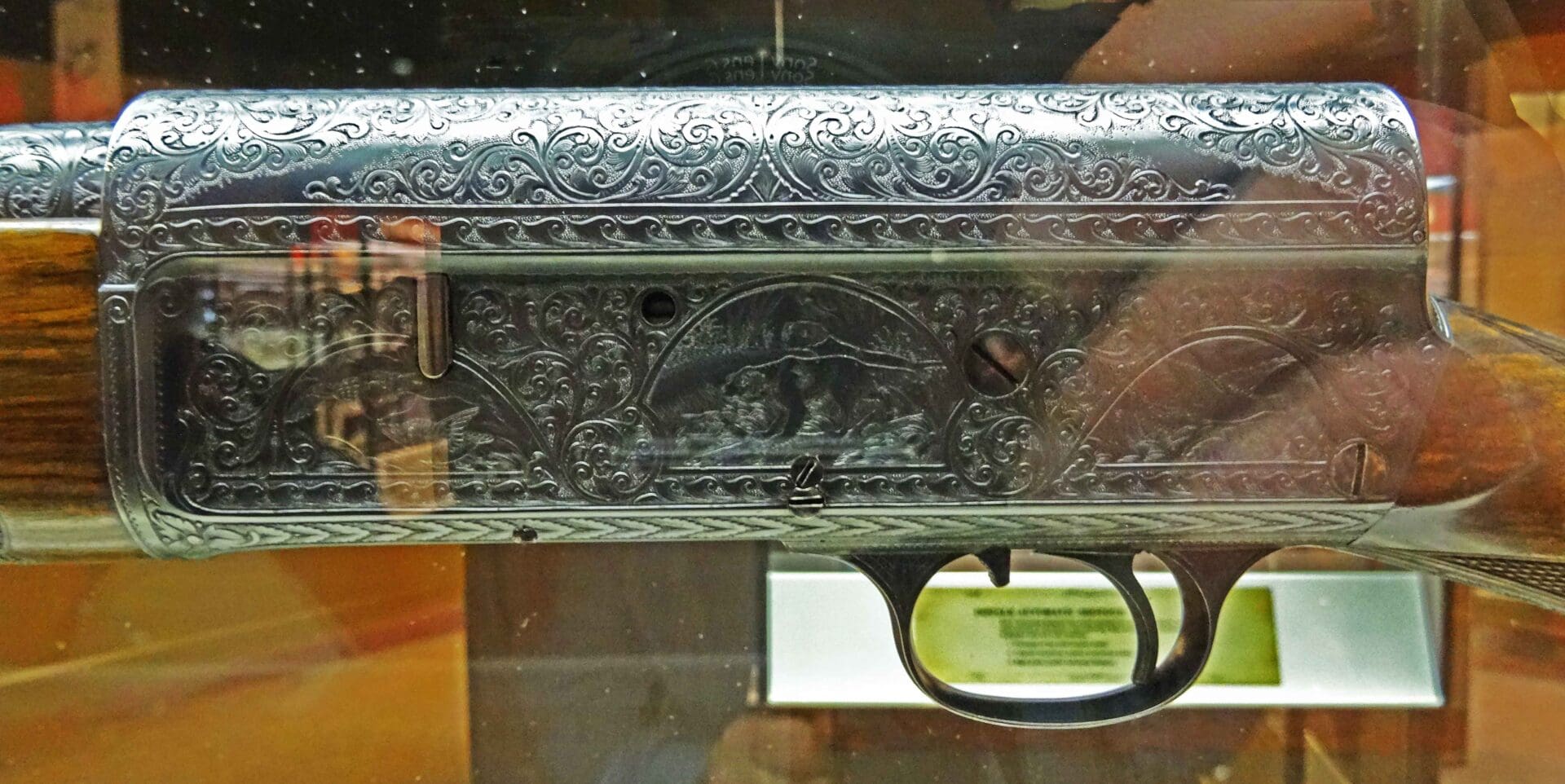

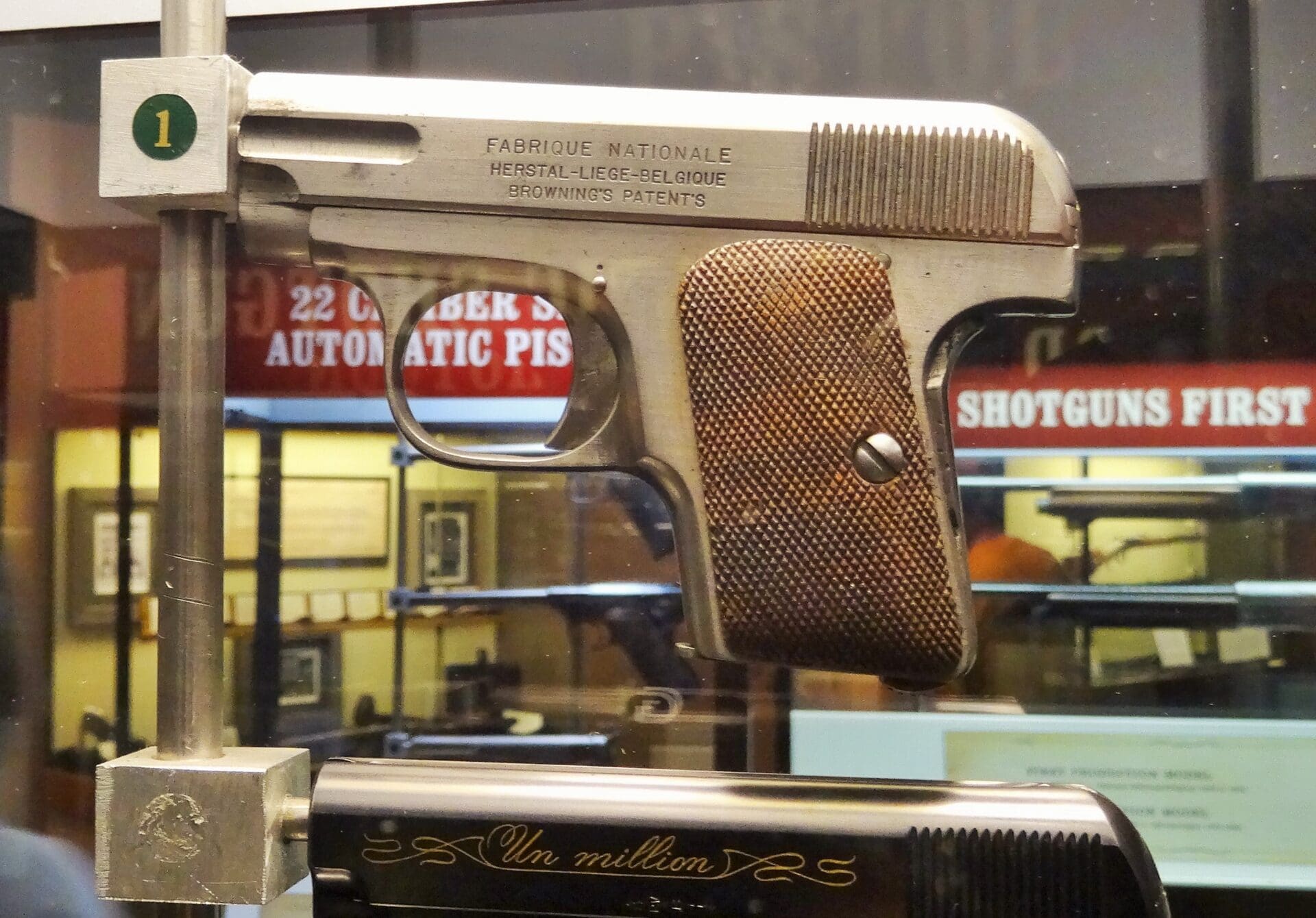
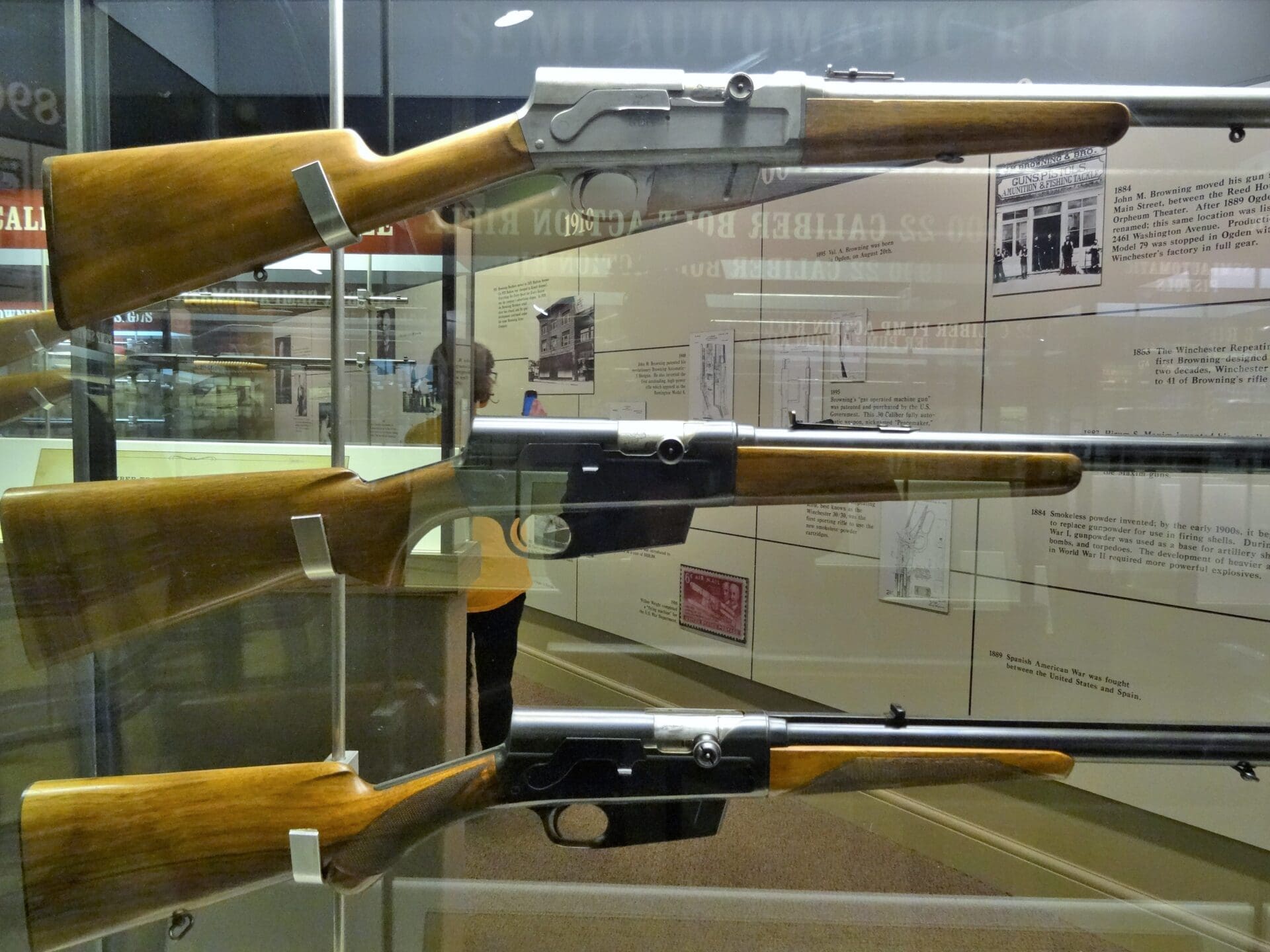
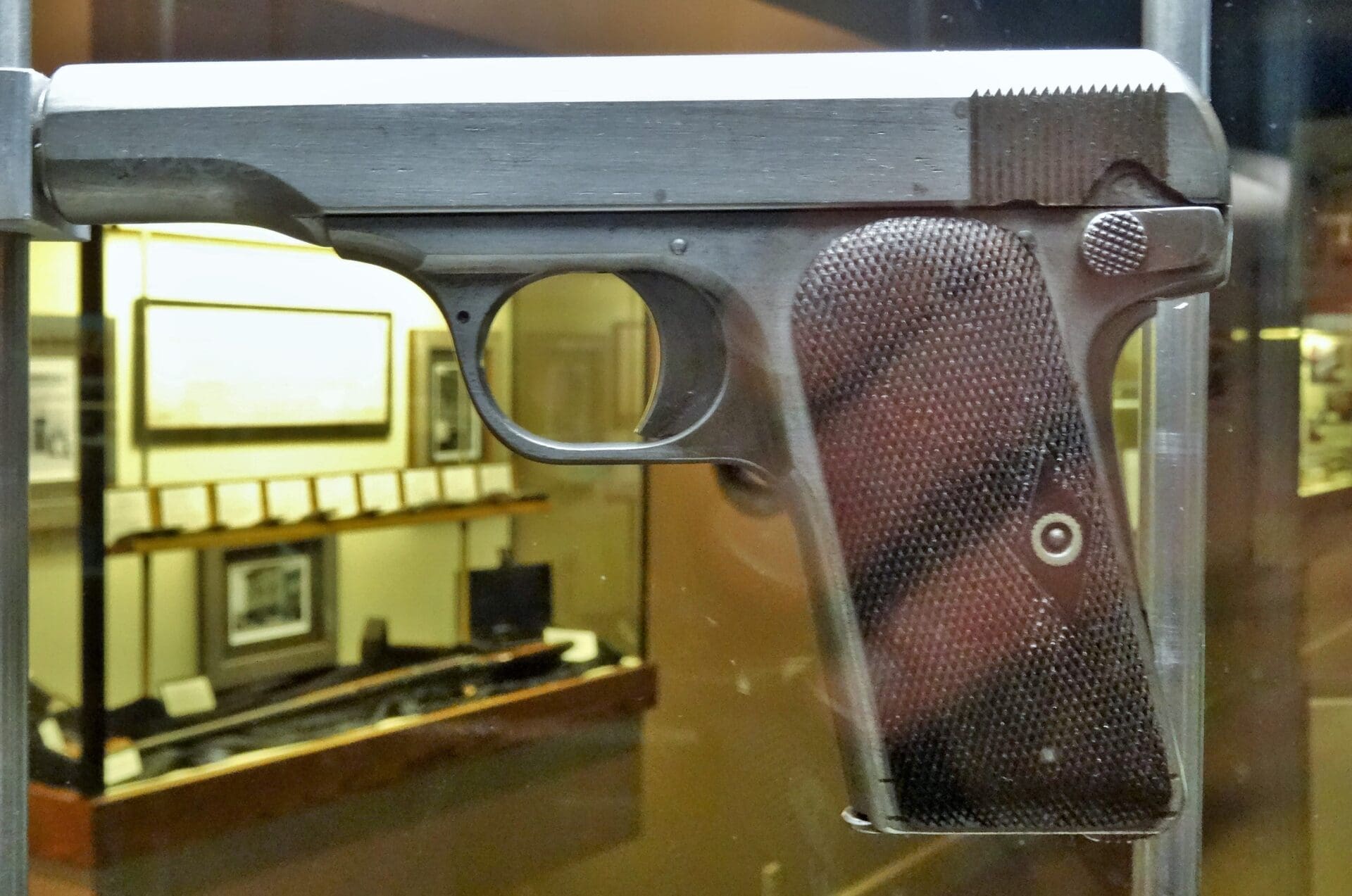

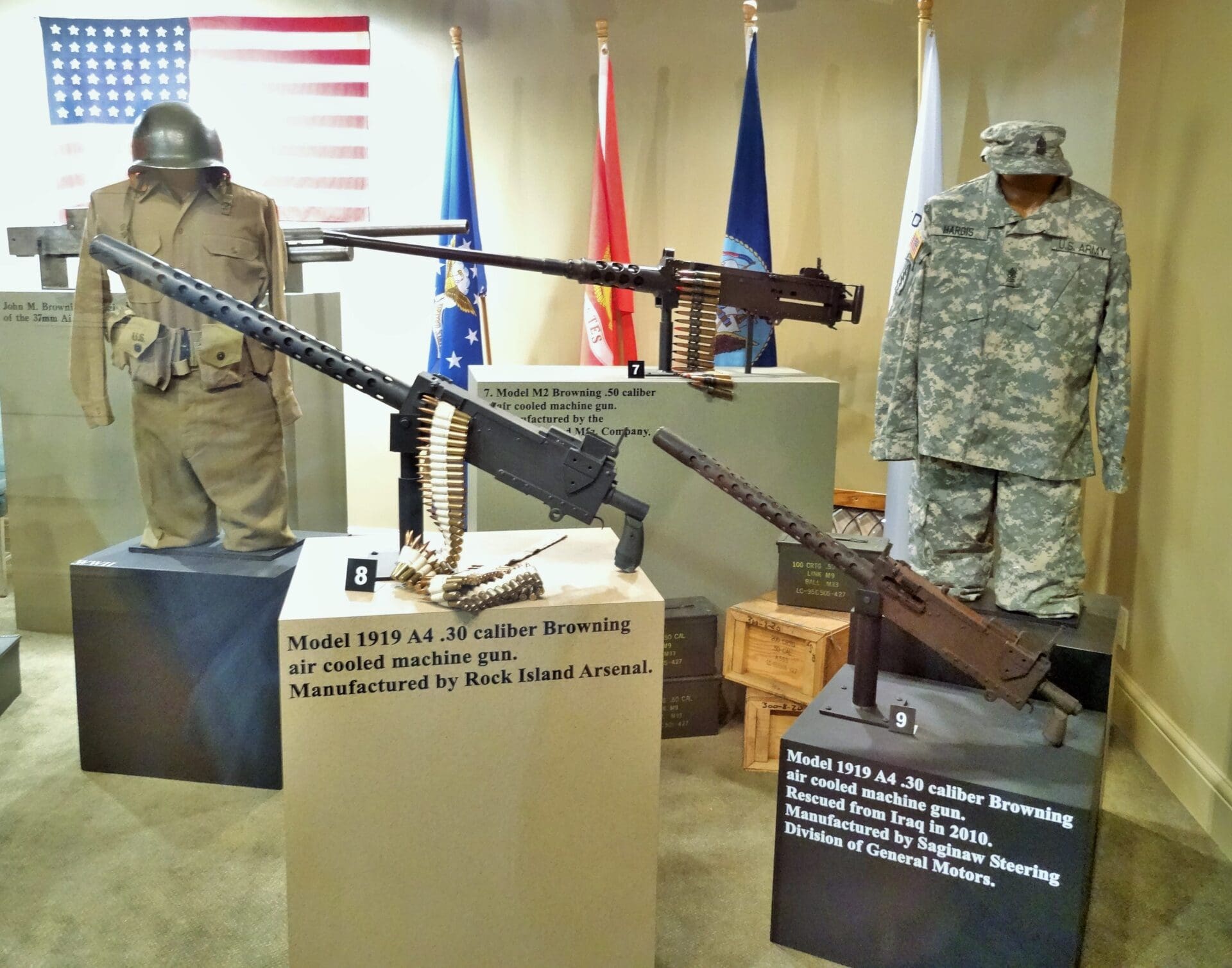

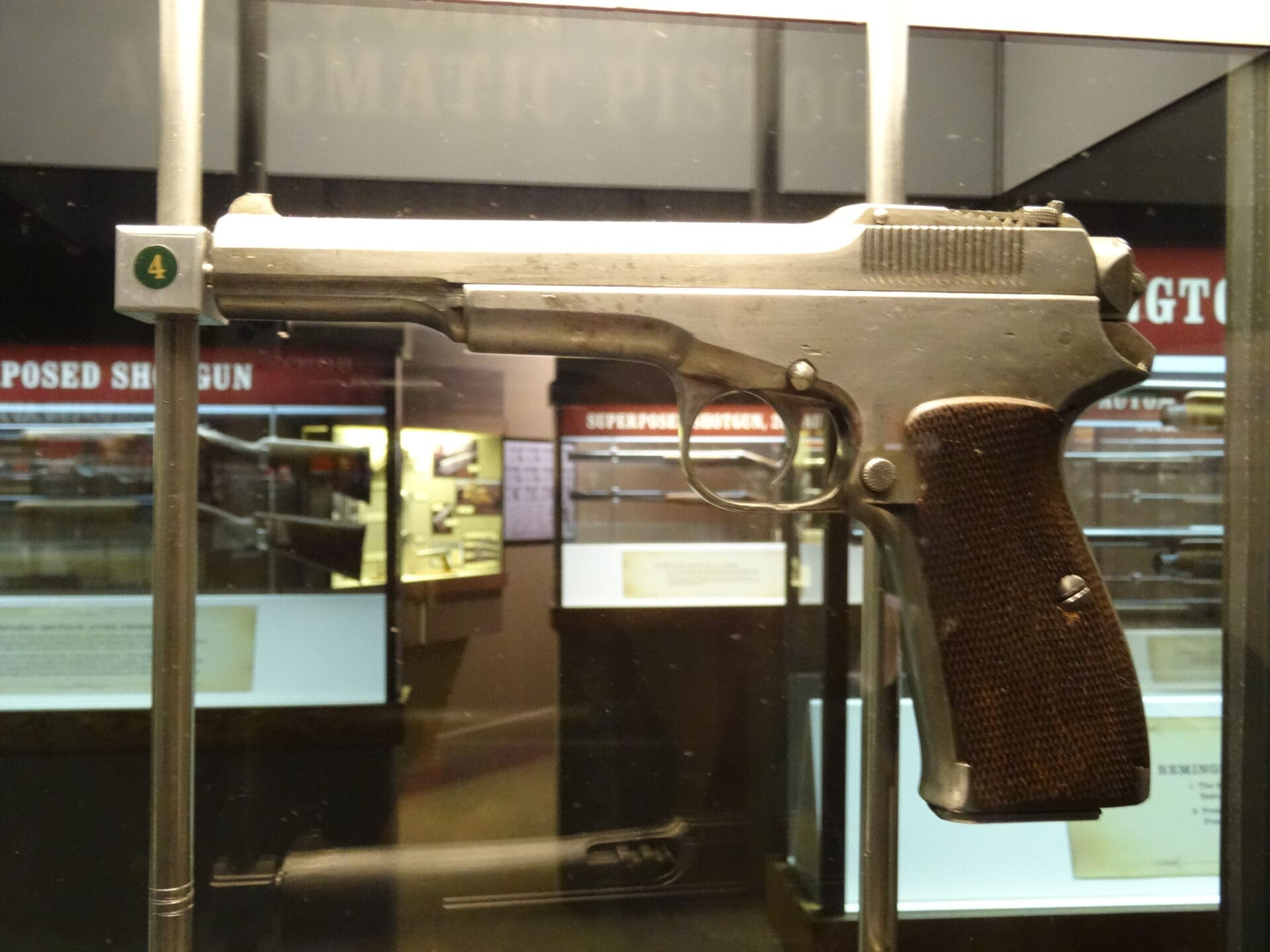
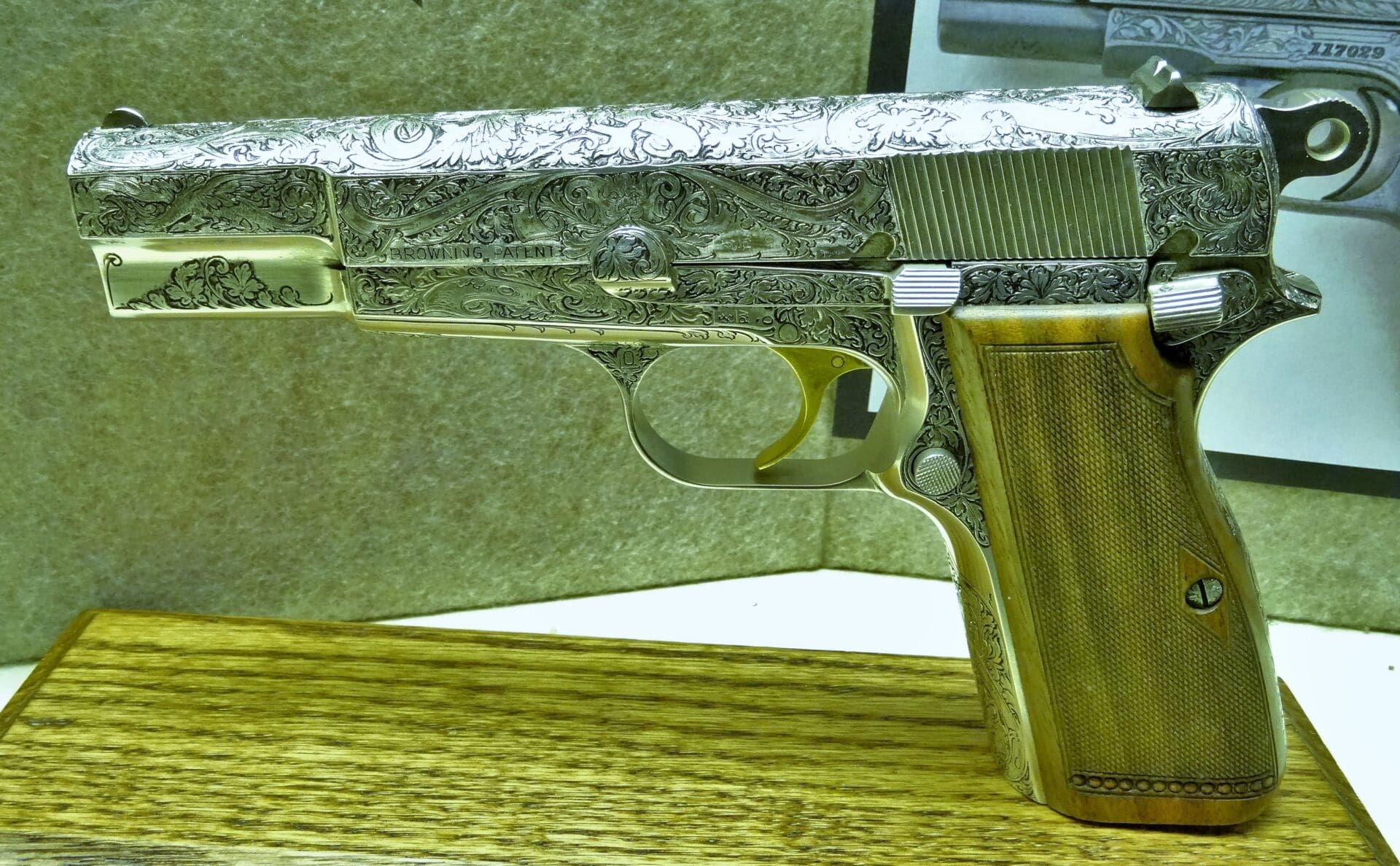
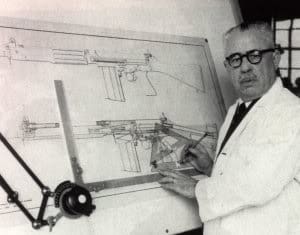


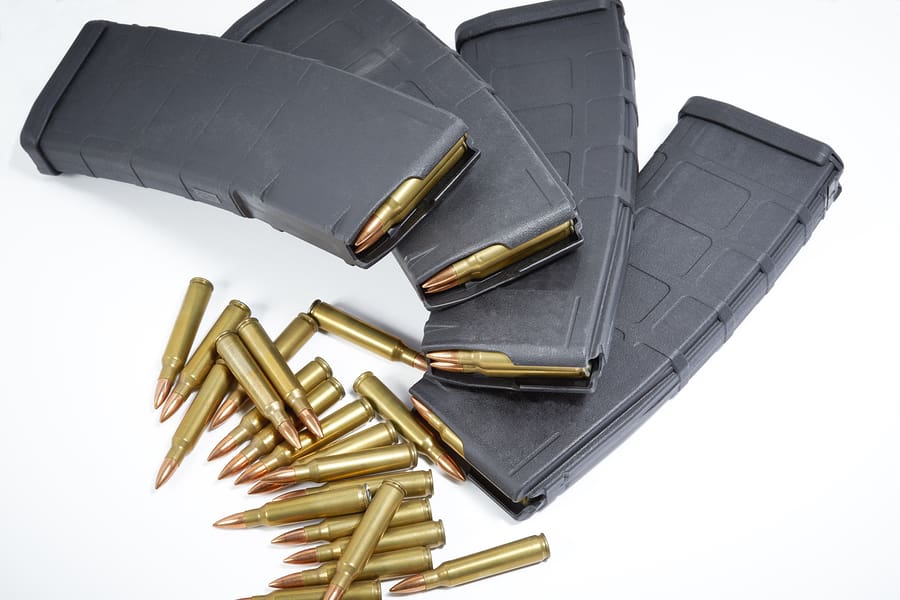
Nice trigger discipline.
Someone had to say it first. 😀
Heh, first thing I thought and in more than one picture.
Maybe he was born with his finger on the trigger. 😀
Not a female model, therefore gets a pass… 🙂
Also gets a pass due to being John M. Browning…
If there is one person in the world I am okay with giving an exemption from the 4 Rules, its St. John. Worst case scenario, someone got shot by JMB… and thats probably the greatest honor that person ever received.
Great article! I’m glad TTAG has the “Historical” category for articles and I hope to see it continue to fill up with more and more excellent content 🙂
Greatest firearms designer ever. Period.
This ^
and this > “As was his respect for the workers and artisans at the factory.”
Amazing creator, and just a plain great man.
Wow. Very well written, Joe; thank you. I knew JMB was a great man, but I wasn’t aware of the details. A phenomenal write-up for a phenomenal man.
This was a fantastic read. Thank you.
Great article!! Thanks, and keep’em coming.
It’s just one man’s opinion, but for my money the SA-22 is the most beautiful firearm ever. Darn fine shooting iron, too!
A fun read!
Love to see more articles like this. Excellent – thank you!
Great article about a giant of the firearms world. Thank you for this, very informative and yet enjoyable at the same time! Nice work.
Just a small correction. The rifles that won the west are considered to be the 66 and 73 model Winchester. We all know that shotguns and all sorts of guns won the west but the Winchesters get better PR.
Saint John the Browning didn’t get involved in lever action Winchesters til after Winchester wanted to improve their product line.
Fantastic article!
I very much enjoyed this article. Well done, Mr. Grine!
Love me some gun history in the morning.
Thanks Joe!
Great read. I always knew my grandfather’s FN Auto-5 had legendary significance. Nice to see the details of how it came to be.
As someone who is part Belgian I approve this article. Terrific piece of history!
pops always said “get a colt woodsman.”
i bought a mkll instead.
now that i know the woodsman is a jmb i’m full circle.
The shotgun in the top picture looks just like mine, but it’s probably a couple decades older.
Good stuff
Fine article! Thank you.
Great article, a lot of this I knew, but learned a few new tidbits. The JMB/FN relationship is an important on in the firearms industry… and I’m glad a good portion of this article was spent talking about the greatest shotgun ever invented, the A-5.
The guns most often associated with John M. Browning are . . .plus the Ithaca 37 and Browning BPS.
And the Stevens 520. People forget the Stevens 520 – but it is as solid a pump gun as you’ll ever find.
The Stevens 620 is an improvement; a bit sleeker, handier than the 520. But they’re both very well designed and executed shotguns. Their takedown method is elegant, and the lock-up is superb. If I had to have a shotgun for war-time close combat, I’d choose the 520 – because it is built like a tank. None of this dainty, flimsy receiver crap from Mossy 500’s or Rem 870’s. Noooo. The 520/620 have receivers that are machined from one solid block of steel, and they left lots and lots of steel behind. If you need to buttstroke someone with a shotgun, make it a 520/620; you’ll get the message across.
Did a Christmas card a few years back featuring the family with a few of Mr. Browning’s designs; the wife had a ’94, my son a ’92, daughter an ’85, and dad with a ’95. One of my all-time favorite pictures. Put the card on the “board” with the others at the hospital where used to work; got some interesting comments. Surprisingly, they were mostly positive.
Great article, thank you.
WWJMBD?
a Hi Power is in my immediate future. The price was too high, but I didn’t pay any money for it.
Great article. Hats off!
“Browning grabbed his prototypes and hit the road, never to return to New Haven.”
A minor point, but he actually did return 16 years later when Winchester was contracted to manufacture the BAR. This is discussed in the excellent book ‘John M. Browning: American Gunmaker.’
From the book:
“Though John went to New Haven on numerous occasions and spent considerable time in the Winchester factory, apparently neither he nor Bennett felt nostalgic enough to bring about a meeting.”
4th pic down – Is that the ‘Trombone’ 22.lr?
I understand Browning was laid out ‘in state’ after his death on the conference table in the FN boardroom.
John Browning was laid out in state in the board room and all employees were given time off o pay their respects “The Master”, Le Maitre. According to his biography.
Sonny
You really should read his biography. This is a nails tough man of Mormon pioneer stock who started out in a dank drafty shed under the tutelage of his father. His innate ability to design firearms before CAD or even in his case mechanical drafting is incredible! John Browning got the idea, he saw it and he built it. Enough said.
Wish I could get a Browning High Power in high polish carbonia 🙂
!
To really appreciate JMB’s talent and prodigious output, people need to see the Browning Firearms Museum, which is located in the old train station in Ogden, UT. There’s also a rail and a car museum there as well, so hey, you get three for one.
Upstairs is the Browning Firearms Museum.
Two things I’d recommend people do if they take the trip:
1. Look at the sheer number of different mechanisms, actions and purposes of the guns JMB invented. This is what places JMB into a league of his own in the history of guns. Most all other firearms designers and geniuses have been known for, at most, a couple of unique ideas.
Example: Gaston Glock has really invented only one gun. Glock has re-spun the same design umpteen different ways. When you get down to it, every Glock handgun is the same design: recoil operated, striker-fired, semi-automatic or full automatic. That’s it. Gene Stoner – gas operated rifles. The AR-10 and AR-15 are basically the same design. The AR-7 survival rifle is a blowback semi-auto, hardly anything new or ground-shaking. Or, take John Garand’s creations – the M1 and M14 – they are very much the same mechanism of action.
Not so with JMB. He almost “did it all.” Rifles, shotguns, pistols. JMB did lever action, falling block action, slide/pump and semi-auto action rifles. Pump, lever action (yes, lever action!), semi-auto and break-action shotguns. Semi-auto pistols by the bushel basket. Full-auto military weapons. No one else designed as many unique actions and used as many modes of operation in his inventions as Browning did. JMB didn’t do revolvers and he didn’t do bolt action rifles. Since Mess’rs Colt, Smith & Wesson handled the first issue well, and Peter Paul Mauser did the second issue proud, I think we can agree that JMB wasn’t a slacker for ignoring these two actions.
2. Go look at the re-created workshop of JMB’s in the museum. NB how few tools there are. It is pretty obvious that he didn’t have a lot of machine tooling. All I saw there was a drill press and a lathe. It is obvious that if JMB can make guns without CNC machines, so can anyone else.
As to the A-5 and Winchester, here’s a little side-note to Joe’s well written article:
Winchester helped JMB patent the A-5. These were strong, well-written patents. When JMB split the sheets with Winchester and took the A-5 to FN, Winchester saw they had a problem on their hands. The A-5 was terribly popular, and after about only five years, Winchester saw what a mistake they had made. So they set their engineers off to build a competing semi-auto shotgun.
The result was the horribly dangerous and absolutely silly (in design) Winchester 1911 SL (self loading) shotgun.
The 1911SL came to be known as “The Widowmaker.” This was the first gun to put a serious dent in Winchester’s public reputation. I’ve seen some real crap and dross in the gun world, but the 1911 SL is, to me, one of the single worst and most dangerous designs I’ve seen in a non-military gun. And I’m including “Saturday Night Specials” and junk guns in with the list of “most dangerous.” The 1911 SL had such bad ergonomics that more than one hunter literally blew a load of birdshot through his brains whilst loading or unloading the 1911 SL. Go find a picture of one for why.
2.
Any chance you’d do an article on the Widowmaker? I’d love to hear more about it.